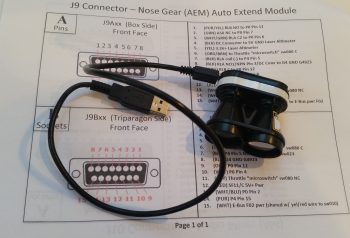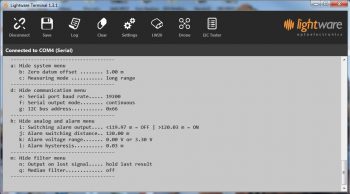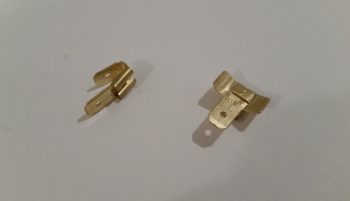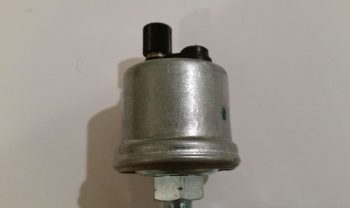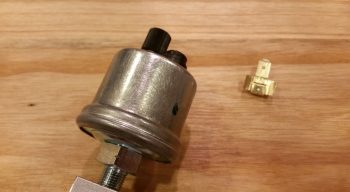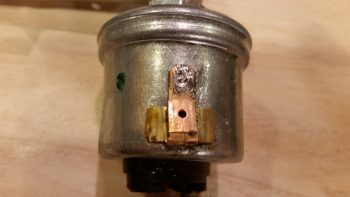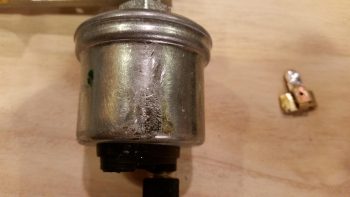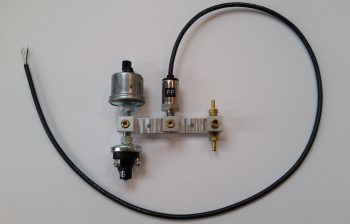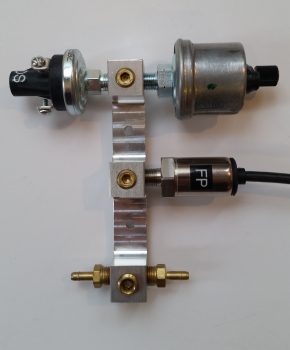will get you every time! We all know the saying about assuming, well I “went there!”
Before I tell you that story of woe, first some successful task completions. My first order of the day when I went upstairs to work on some even more tweaking of electrical diagrams was to hook up my nose gear auto extension system’s laser altimeter to my PC via the included USB cable to finally configure the settings.
After I downloaded and installed the Lightware terminal program, I then proceeded to set all the operating parameters for the laser altimeter. Of course that meant going paragraph by paragraph through the manual to make sure I didn’t screw anything up!
As I was tweaking the electrical diagram for the engine systems and EIS4000, I wanted to investigate further a note I had on my VDO HPS-01 Oil Pressure sensor. The manual states that the case must be grounded, but the sensor only includes one terminal for the signal wire. As I went back through my notes I had highlighted a myriad of issues builders had had with these VDO sensors . . . mainly in wonky sensor readings caused by poor or no grounds.
Enter rabbit hole! Well, I wanted to get to the bottom of this since it was a point on my electrical diagram that was cloudy and unknown to me. I wanted an answer to this riddle so I could press forward with this variable turned into a constant. After an hour or so of researching my notes, manuals, forum posts (mainly VAF) and other notations, even from canard heavyweights like Marc Zeitlin, I came to the conclusion that my VDO oil pressure sensor, did “in fact,” need a grounding tab attached to the case as spelled out by the EIS4000 manual, et al.
I looked online for these tabs, and after not being able to find a source of supply, I decided to construct one myself from some multi-connnecting Fast-ON tabs I had on hand. I simply bent the wings of the female connector out to then create curved “wings” that could then be attached to the case of the VDO oil pressure sensor.
Patting myself on the back for my sheer ingeniousness, I then read up on brazing vs. soldering, concluding there that with brazing being generally 5x stronger than soldering, I should “in fact” go that route. I perfected my expertise by watching a few YouTube videos on brazing, and with my newfound knowledge in hand I ran down to Lowe’s and grabbed some bronze brazing rods. Ah, my plan was coming to fruition!
I got home, cleaned up both surfaces to be brazed with steel wool and then some wipes with Acetone.
I had let a wood board soak in water while I was gone and used that as the underlayment for my project. Yes, all ready to go!
And then the “fun” began…. with my portable propane torch I attempted to get this baby red hot. Well, after not doing that, but inadvertently burning some of the plastic assembly on the top side of the sensor (merely cosmetic) and realizing my best attempts of getting any bit of the brazing material to lay down was a lesson in futility, I called it quits.
Hmmmm?!?!?!
I then decided that since I had a fair bit of surface contact between tab and case, I would try my hand at soldering the tab onto the case. Again, no joy! The case seemed to be impervious to any attempts to attach anything to it! Crazy . . . .
Here’s the sad aftermath of my attempts to attach a grounding tab to the side of my VDO oil pressure sensor.
Now, here’s the kicker. I did learn a lesson in all this. After failing miserably above, I went back into research mode. What was the deal with this VDO sensor? Did they make others (they do) with a terminal for a ground wire (they do). Hmmmm? So I uploaded all my pics, put my notes in my blog to finish in the morning, and then called it quits for the evening.
However, as I was getting ready to head to bed, I was looking through pics of installed VDO oil pressure units in aircraft. Now, I knew if it was installed straight to the engine case (which is a no-no in itself) that it didn’t need a ground wire since the case was grounded. But I was seeing pics of remotely mounted 1-terminal VDO oil pressure sensors like mine WITHOUT a visible grounding wire!
What gives?!
Thus the need for my ground wire . . . or . . . wait a minute! Ahhhhhh! I quickly did a continuity test on my engine sensor manifold block and –Voila!– it’s conductive! I got a solid tone with one probe on one end and the other probe on the VDO oil pressure case at the farthest point I could get from the first probe.
Thus, my ASSUMPTION that the manifold block was a non-conductive aluminum spun me off on a wild goose chase and caused me literally hours of un-needed effort! Combine that with the note on the GRT EIS4000 diagram that states: “The case of the sensor provides a ground connection for VDO type sensors.” I had simply allowed the word “case,” combined with all the horror stories and accounts of the requirement to attach a grounding tab lure me down a road that was entirely unnecessary!
Ok, so here’s a shot (I cleaned up the nasty brazing/soldering marks off the VDO oil pressure sensor with steel wool earlier) of my engine sensor manifold with the sensors attached. The top left is of course the VDO oil pressure sensor that sends a signal to the EIS4000. The sensor beneath it is a simple backup oil pressure switch that drives a “Low Oil Pressure” light on the AG6 warning annunciator in case I lose my EFIS, EIS, etc. The sensor with the black cable running out of it is the Fuel Pressure sensor. On the right you can see 2 brass barbs, one is for the PMag MAP tube and the other tube runs through the firewall into the hellhole where the Electroair and GRT MAP sensors are located.
At this point I’m not sure exactly where or in what orientation the engine sensor manifold block will get mounted, so I included a pic showing it oriented vertically.
I should note that in addition to all the antics above, I spoke with my engine guy up in Winchester, VA. We scheduled the engine build for the end of next week, so again, I’ll start ramping up for that in earnest early next week.
Tomorrow I plan to get back to the plan, and that is to really make an honest attempt to finish labeling my power busses!

